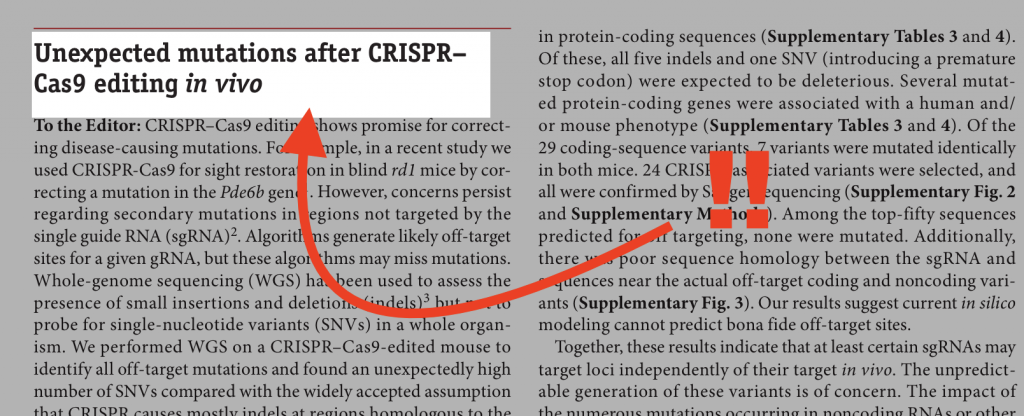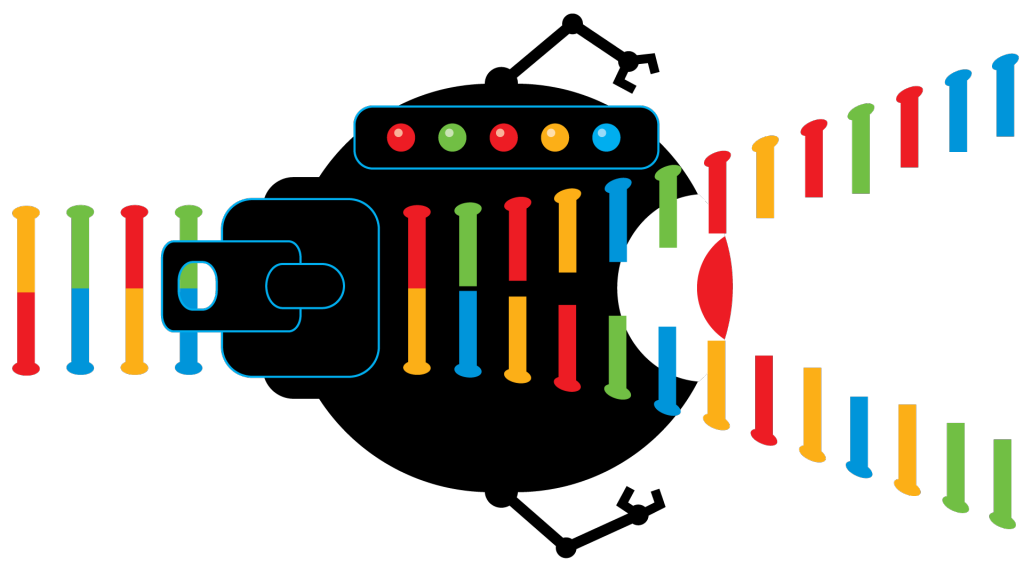Transhumanists Understand What Investors Do Not; Pioneering Is Messy
News May 25, 2025 Damon Mitchell
A recent paper released examines the precision of the CRISPR-Cas9 process, revealing that fans may have a reason to feel concern. As it turns out, the proposed savior-bacteria of all our dreams may still need some work.
For researchers, this sort of news is status quo. For the media, it’s been a feeding frenzy, resulting in lost revenue for labs invested in the research.
The whole situation is as much a comment on the media-messy world in which we live as it is the ignorance of investors.
Anyone who has ever made an alteration to her body can tell you, whether it was losing unwanted body fat or implanting a foreign object under the skin, there is a learning curve.
Hacking the body can be difficult, messy at times. We get better as we go, but research on humans, even human substitutes [read: mice], is a slow-going process of trial and (emphasis on the) error.
The Paper
The research group who put out the letter were a group of doctors from Columbia, Stanford, and the University of Iowa.
Released in Nature Methods, the paper titled, “Unexpected mutations after CRISPR-Cas9 editing in vivo,” revealed something interesting. Mice previously treated for blindness using the CRISPR protocols showed mutations over time.
The two mice they treated showed somewhere in the neighborhood of 2,000 genetic anomalies. It’s a thin sample, but staggering within that sample.
Mutations in CRISPR research are nothing new, but these numbers were 10 times previous research. The smoking gun implied by the paper is proof that CRISPR causes cancer. In the media, it spread the same way.
The Media
First, let’s agree there is no such thing as “The Media,” not in the way it seems. The Media don’t function as one entity, but at times it seems that way.
That’s because whatever readers read, wherever we read it, someone wrote it to sell something. Blogs and articles sell their viewers to advertisers. Sensational headlines are what hook readers.
We love stories about a rising star as much as we do a fallen one. The story about CRISPR suggests the latter. The ensuing headlines implied trouble in paradise, as if nobody knew CRISPR had miles to go before it was market-ready.
The Fallout
This sword has two edges. Researchers and folks in the know were not surprised to read about the anomalies. Investors were less understanding.
The three big biotech companies invested in CRISPR saw immediate dips in stock values, and the inevitable rebound by more savvy investors when those tasty options “went on sale.”
The only good thing that comes of this sort of thing is the biotech stock shakes off the investors who had no business in those stocks anyway.
The downside is the lab can can feel this pressure. That is not good for unbiased research. Labs have to serve scientific honesty, not their investors desire for good news every day, all the time.
The Truth
Somewhere between “savior-bacteria” and “cancer agent,” CRISPR-Cas9 lands on our spectrum of solutions for altering the human genome.
It’s exciting, and easy to see how some of us (guilty over here) can go off the deep end about CRISPR solving all disease forever. It’s equally irresponsible to assume that bumps in the road mean the end of the journey.
If you were one of the people who scooped up some inexpensive biotech stocks in the wake of this, color me jelly. Wish I had done so.
We have yet to see past the tip of a large iceberg for the CRISP process. The research is gonna move a lot slower than Twitter, though, so get ready to wait.
In these labs, however, are where the best stories of transhumanism will unfold. Stay tuned, but stay smart.




